What Do Leeks Taste Like? Mild Onion Flavor in Every Bite
Leeks, those elegant members of the allium family, often spark curiosity among home cooks and culinary enthusiasts.
These slender green and white vegetables might seem mysterious to people unfamiliar with their unique profile.
Many wonder about the flavor nuances that make leeks a beloved ingredient in countless recipes around the world.
Unlike their sharp-tasting cousins like onions and garlic, leeks offer a more subtle and sophisticated taste experience.
Their mild, slightly sweet character allows them to enhance dishes without overwhelming other ingredients.
Chefs and home cooks appreciate leeks for their versatility and delicate flavor that transforms soups, stews, and sautéed preparations.
Understanding the taste of leeks can elevate your cooking and introduce you to a whole new dimension of culinary enjoyment.
What You Should Know About Leeks
Exploring leeks goes beyond simple soup ingredients.
These green and white veggies come from onion relatives like scallions, garlic, shallots, and chives. Sizes range from tiny to large stalks.
Cooks worldwide love leeks in many dishes. Potato and leek soup might be famous, but these vegetables work in countless recipes. Leeks bring mild flavor and interesting texture to meals across different food cultures.
How Leeks Look
Leeks sport broad, flat leaves that spread wider and thicker compared to green onions. Their base blends smoothly with the leaves instead of standing apart.
Leaves wrap tightly around each other along the whole vegetable. Leeks resemble a sturdy celery cluster, with similar growing patterns.
Stalks cluster closely together, gradually narrowing toward the center of the vegetable.
Leek Flavor Made Easy
Leeks offer a sweeter taste compared to green onions, with cooking methods influencing their flavor profile. Raw leeks present a delicate flavor different from other onion-related vegetables. Their taste carries subtle grassy and herbal notes.
People often prefer cooked leeks, though eating them raw remains an option. Slicing raw leeks into half-moon shapes works well for salads, burgers, and sandwiches. Larger leeks typically have stronger flavors.
Cooking techniques significantly impact leek texture and taste. Prepared leeks become creamy and buttery, developing a mild flavor while absorbing surrounding food aromas.
Roasting creates crisp leeks with a melt-in-your-mouth quality. Complementing the caramelized effect, spices like thyme enhance their overall taste.
Baby Leeks vs. Mature Leeks: Flavor Profile
Fun Facts About Leeks
Wales claims leek as one of its national symbols. Stories tell about a battle at Heathfield in 633 C.E. where Welsh soldiers used leeks to mark themselves. Their victory made leeks a lucky charm across the land.
More than just a kitchen staple in Welsh meals, leeks play a special role in local celebrations. Citizens proudly wear leeks on St. David's day, March 1st, honoring the monk who first suggested using leeks as a unique identifier.
Which Parts of Leeks Can You Eat?
Leeks have white and light green parts that people typically eat. These sections resemble stems and offer the best flavor.
Dark green leaves can be consumed, though they might introduce bitter tastes or harm meal quality.
Cooking dark green leaves is possible, but they require longer preparation to reach a tender consistency.
Leeks Nutrition Facts
Leeks pack a powerful health punch with super low calories. One serving of 100 grams of raw leeks brings just 61 calories to your plate.
These green veggies contain minimal fat at 0.3 grams and a small 3.9 grams of sugar. They also provide 20 milligrams of sodium and 180 milligrams of potassium.
Leeks shine bright with their nutrient profile. These vegetables come loaded with key vitamins including vitamin A, K, C, and B6.
They also offer important minerals like calcium, iron, and magnesium.
Leeks Are Good For You
Leeks pack kaempferol, an antioxidant that fights inflammation and helps prevent cancer.
Medical research shows these green veggies lower risks for stomach, colon, and prostate issues.
Vitamin K in leeks strengthens bones and reduces chances of developing osteoporosis.
Carotenoids found in leeks protect eye health and decrease risks of vision problems.
Weight watchers appreciate leeks for smart eating. High water and fiber levels help people feel full longer.
Their tasty flavor makes meals more interesting when mixed into different recipes.
How To Pick Leeks
Leeks come with different taste profiles for various dishes.
White and light green sections signal fresh leeks.
Look for roots at bottom, which help keep leeks fresh longer.
Smaller leeks offer milder flavors.
Larger stalks provide stronger taste experiences.
Skip large leeks with dark green tops missing roots.
These older leeks taste unpleasant. Yellow leaf edges mean leeks are drying out and will taste bland.
Slightly darkened leeks work well in leek soup if purchased a few days earlier.
Fresh, firm leeks work best for most cooking needs.
Using Leeks in Everyday Dishes
Leeks became my kitchen friend after years of learning. My first encounters meant chopping them raw into salads. Slowly, I started replacing onions with leeks in different dishes. Learning how to clean and slice these vegetables takes some practice.
My go-to techniques help you handle leeks like a pro:
Cleaning Leeks Step By Step
Leeks come with complex layers where dirt easily hides between each section. Cleaning these vegetables requires careful attention, especially when dealing with thick stalks that trap more soil in their multiple folds.
Simply rinsing the outer surface won't solve the problem completely. Dirt remains tucked deep inside the vegetable's structure.
My recommended cleaning process involves chopping first, then washing. I slice leeks into 1-inch round pieces, place them in a colander, and rinse well under cold running water in the sink.
Water flows between each layer, washing away hidden dirt effectively.
After thorough rinsing, let the leek pieces drain and dry before cooking or adding to your recipe.
Cutting Leeks Guide
Clean leeks by washing them to remove hidden dirt from their layers.
Next, slice off the dark ends and discard them.
Good leek sections are white and light green. Remove the roots from the opposite end.
You now have usable leek parts ready for cutting. Options include making rings, half-moons, or splitting lengthwise.
Sharp chef knives or Chinese cleavers work best for quick, precise cuts. Small rings work well in salads and quick pan dishes.
Large leek rings might need extra handling. Split thick leeks lengthwise, then chop into 1-inch half-moon shapes.
Some cooks like cutting leeks lengthwise into thin sticks for adding to different meals.
Best Ways To Store Leeks
Fresh Leeks Storage Secrets
You bought leeks but won't use them all at once. Wondering how to keep them fresh?
Simple methods work best.
Shake dirt off leeks before storing.
Rinse them thoroughly and let water drain completely. Use a damp paper towel to wrap the leeks.
Store wrapped leeks in a perforated plastic bag inside your refrigerator.
Leeks stay good for ten days in cold storage.
Around day seven, leaves might start turning yellow. Quick trim can extend freshness by a couple more days.
Larger leeks spoil faster than smaller ones.
Perfect leek storage needs cold temperatures near 32 degrees Fahrenheit with high humidity between 95 and 100 percent.
Warmer temperatures cause faster yellowing of leeks.
Can You Freeze Leeks the Right Way?
You might wonder about freezing green onions. Leeks share similar characteristics, so the same question arises. Specific details can help clarify freezing possibilities.
Leek season runs from October to May. Summer usage requires freezing techniques.
Proper freezing allows leeks to stay frozen for ten months in refrigerators.
Freezing success depends on careful preparation. Thoughtful steps make future meal inclusion easier.
Preparation starts with cleaning leeks and trimming roots. Cut leeks into small rings using standard methods. Blanching follows this process. Boil leeks for 40 seconds, then transfer to cold water. Water bath helps preserve freshness, appearance, and flavor.
Kitchen towels work well for thorough drying. Spread leeks in single layer on baking trays for initial freezing.
Two hours later, transfer leeks to practical freezer containers with lids.
Whole leek freezing is not recommended. Large pieces occupy more space. Dark green sections waste freezer room. Uneven freezing occurs with whole leeks.
Cutting and blanching remain optimal preservation methods.
Frozen leeks work best when sautéed in pans or added to boiling water.
Defrosting options include thawing trays or room temperature. Quick usage after defrosting ensures best results.
Tasty Recipes Using Leeks
Leeks change how you cook with onions forever. Here are my two top leek recipes worth making right away.
Leek Tart Recipe
Tarts work wonderfully with nearly every vegetable and fruit, with leeks becoming my top veggie choice for this dish.
Things you need:
Warm your oven to 390 degrees Fahrenheit.
Next, spread pastry on a board while sprinkling flour to prevent sticking. Place dough in a tart pan about 3 cm deep and cut off extra edges.
Sizzle chopped leeks in melted butter, splash half a glass of water, cover the pan and cook for 5 more minutes. Mix cream, egg, peas, and spinach for a smooth filling.
Spread filling into the tart, top with leeks and mozzarella pearls. Bake for 30 minutes and pair with a crisp green salad.
Soup With Leeks And Cauliflower
Leeks and cauliflower soup makes a delicious alternative to classic potato leek soup. Cauliflower offers a milder taste and fewer carbohydrates compared to traditional recipes.
Shopping list:
Start by melting butter and olive oil in a large pot. Sauté garlic, leeks, and cauliflower for 10 to 15 minutes until softened.
Pour in vegetable broth and bring to a boil. Cover the pot and simmer for 50 minutes.
Remove from heat and use a hand mixer to create a smooth texture. Stir in heavy cream and garnish with fresh parsley before serving.
Why Leeks Are a Kitchen Favorite
Leeks shine as underrated members of the onion family, packed with wellness perks that make health experts call them a superfood. Mild and sweet, these veggies turn wonderfully smooth when heated up.
Cooks can enjoy leeks in many dishes like:
What do you think about leeks? How do people cook them in your kitchen?
Share this information if you like learning about these tasty and healthy green vegetables!

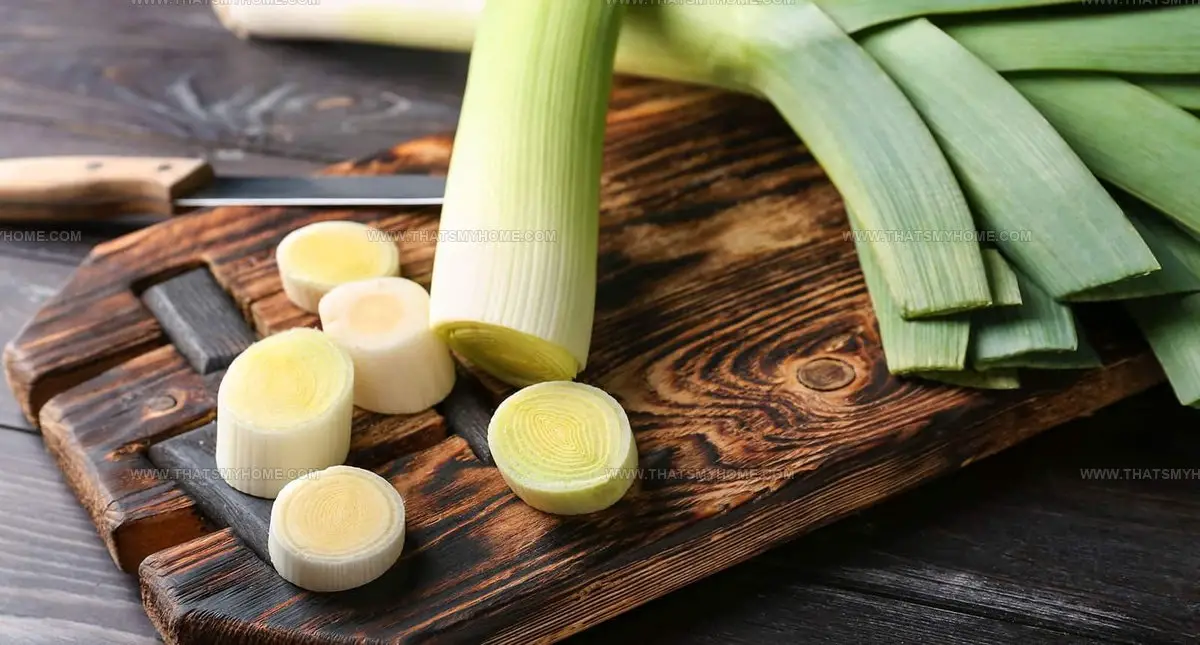
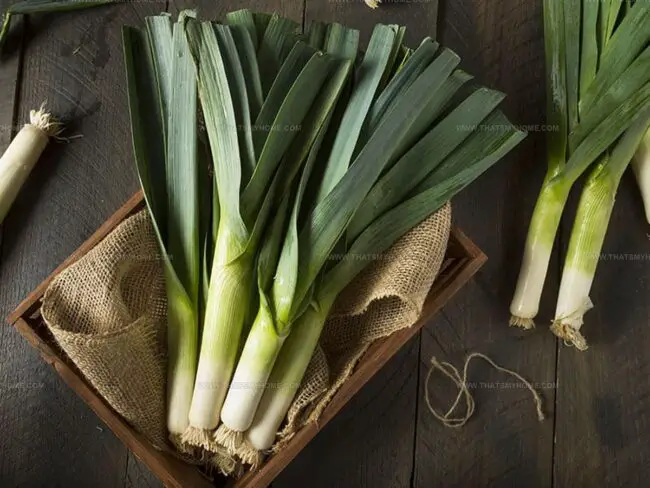
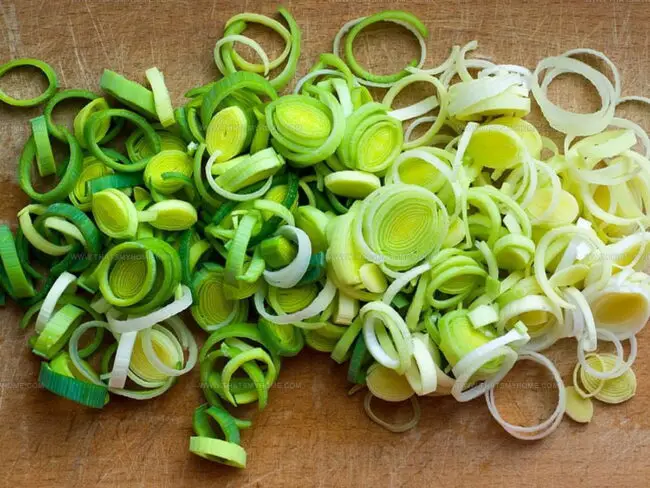
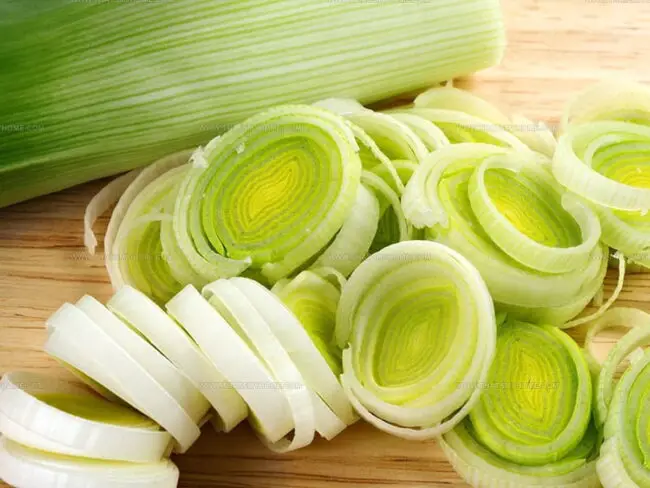
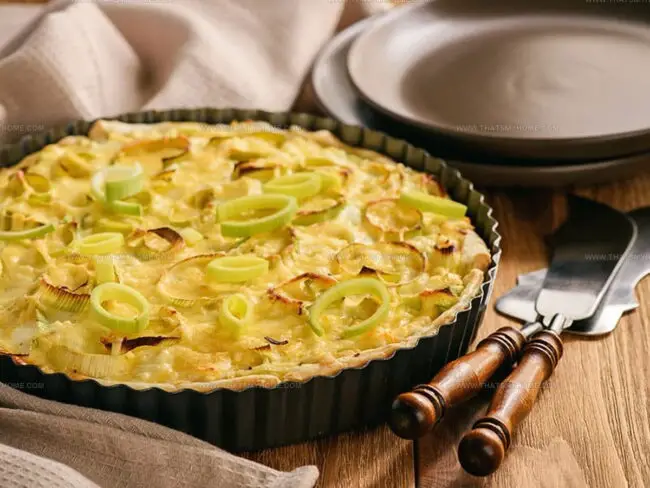
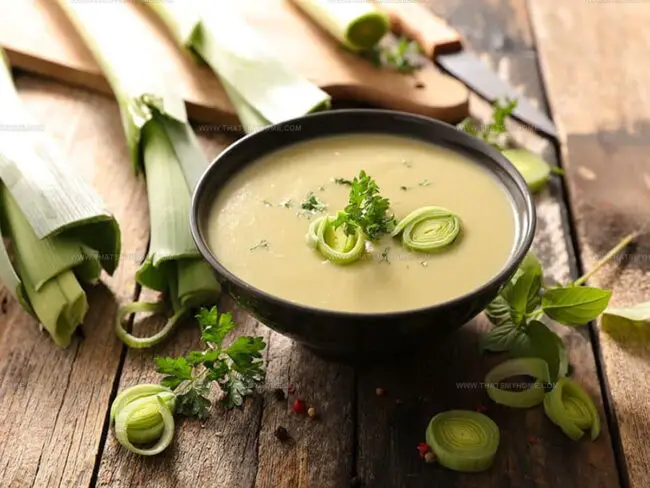
Mary Ellen
Expertise
Education